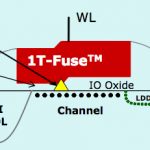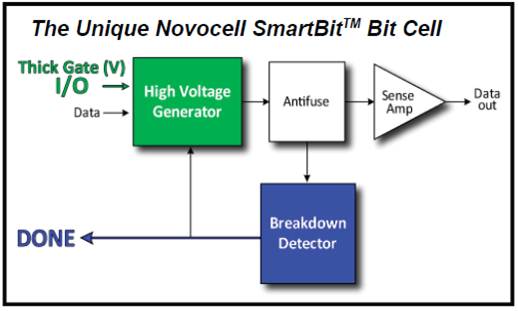Embedded memory makes computing applications run faster. In the early days of the semiconductor industry, the desire to utilize large amount of on-chip memory was limited by cost, manufacturing difficulties and technology mismatches between logic and memory circuit implementations. Since then, advancements in semiconductor… Read More
Tag: non-volatile memory
RRAM Redux
Advanced memory technologies are a perennially hot topic thanks to a proliferation of data-hungry applications pushing our demand for more capacity and performance at less power and area. Among several technology contenders is Resistive RAM or RRAM (also called ReRAM). In this technology a conducting filament is grown through… Read More
Moving chips from industrial to industrial IoT
IHS has put out its 1Q2016 Application Market Forecast predicting the highest growth rate segments for semiconductors over the next five years – and what was once old is new yet again. There it is, in the top right corner: industrial, projected to outpace even the automotive sector.… Read More
The Trojan Horse Was Free Too
Timeo Danaos et dona ferentes. I fear the Greeks especially when bearing gifts. In Virgil’s Aeneid these words are spoken by the Trojan priest Laocoön warning about the wooden horse that the Greeks have offered Troy. But to no avail, Laocoön is slain by serpents and the Trojans bring the horse inside the walls of Troy. Since… Read More
Sidense overlays OTP on TSMC 16nm FinFET
Process shrinks, which have served us well for most of the Moore’s Law journey, are reaching their limits. For switching transistors, the biggest problems of leakage current and gate oxide vulnerability in planar MOSFETs have led the industry to new 3D microstructures such as FinFET. For non-volatile memory, the problem is generally… Read More
Sidense NVM IP clears TSMC9000 at 28nm
Maybe I’ve spent too many years whiffing solder flux fumes and absorbing doses of X-band radiation in anechoic chambers, but I’m a firm believer in the axiom: “Give me enough engineers, and I can get 10 of anything to work right, once.” We have to make this … fit into this … using only this stuff … is what legends are made of.… Read More
Rekeying the IoT with eMTP
For non-volatile storage in IoT devices, there is technology designed to be reprogrammed many times, and technology designed to be programmed once. The many times mode is for application code, while the once mode is for keying and calibration parameters. We are about to enter the IoT rekeying zone, in between these two extremes.… Read More
Sidense and TSMC Processes
I’ve written before about the basic capabilities of Sidense’s single transistor one-time programmable memory products (1T-OTP). Just to summarize, it is an anti-fuse device that works by permanently rupturing the gate oxide under the bit-cells storage transistor, something that is obviously irreversible.… Read More
Non-volatile Memory in the Internet of Things
You have probably heard of the Internet of Things or IoT. This is the future world in which not only are our computers and smartphones connected to the internet, but all sort of other things like thermostats, medical monitors, smart car-keys and soil analyzers. What these “things” have in common is that, unlike computers… Read More
NVM IP: why only anti fuse solution from Novocell Semiconductor is 100% reliable?
The concept of Non Volatile Memory (NVM) block which could be integrated into an ASIC is relatively recent, Novocell for example has been created in 2001. NVM IP integration into an ASIC is a pretty smart technology: integrating from a few bytes to up to Mbits into a SoC can help reducing the number of chips in a system, increase security… Read More





